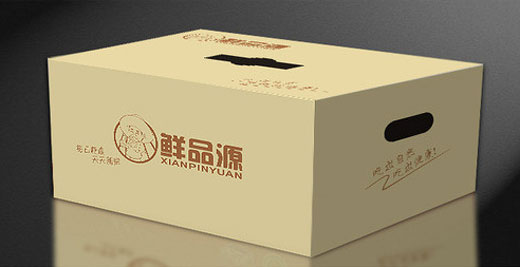1. 熟悉标准和要求
1. familiarity with standards and requirements
要熟悉和掌握各项GB/T、CY/T的质量标准以及本地区和本企业的各项质量标准要求,并熟悉标准中定量的数据与定性的要求。
To be familiar with and master the national GB/T, CY/T quality standards and the quality standards requirements of the region and the enterprise, and familiar with the quantitative data and qualitative requirements of the standards.
此条文应作为一个质检工作者熟悉的基础理论知识之一。因为这些标准,特别是制定的各项标准,都是鉴定书刊质量是否合格的依据。即达到这些标准为合格品,没达到的为不合格品。超过标准的(比标准所定的质量要求还高的)可考虑品的评比。作为一个质检工作者(包括质量检测站、质量管理员和质量检查员)如果不知或不懂这些标准是无法胜任这些工作的,也无法说服别人和进行这项检测工作。所以熟悉和掌握各项质量标准的各项条文是非常重要的。
This provision should be one of the basic theoretical knowledge that a quality inspection worker is most familiar with. Because these standards, especially those formulated at the national level, are the basis for evaluating the quality of books and periodicals. That is to say, these standards are qualified products, and the unqualified ones are not attained. Over standard (higher quality requirements than the standard) can be considered in the evaluation of quality products. As a quality inspection worker (including quality inspection station, quality administrator and quality inspector), if they do not know or understand these standards, they can not be competent for these tasks, nor can they convince others and carry out this testing work. Therefore, it is very important to know and master various provisions of quality standards.
2. 熟悉艺流程、工作过程以及技术要求
2. familiar with art flow, working process and technical requirements.
熟悉所管辖工序(如装订工序)的工艺流程和工作过程以及技术要求。
Be familiar with the process and working process and technical requirements of the process (such as binding process).
装订工序的设备是很繁乱的,各机种之间的共性很小,工艺上装法多而复杂,作为一个装订质量检验工作者,不要求你都会干(也是不可能的)但你管的工序必须要熟悉、懂得、只能对这些工艺技术了解的熟悉透彻后才有发言权去管理,才能对出现的质量问题进行分析原因所在,得以。使出问题的操作者心服口服,加深对质量的重要性的认识。这条要求是质检工作者必知的基础理论之二。
Binding process equipment is very complicated, the commonalities between different types of machines are very small, the process of installation is many and complex, as a quality inspector of binding, you are not required to do (also impossible), but the process you manage must be familiar with, understand, only know these technologies thoroughly before you speak. The right to manage, in order to analyze the causes of the quality problems, and solve them. The operator who is using the problem is convinced that the understanding of the importance of quality is deepened. This requirement is the two basic theory that quality inspection workers must know.

3. 熟悉质量问题易发生的关键点
3. be familiar with the key points of quality problems.
这一条指书刊制成后常见的易发生的质量问题表现形式。如八字皱折、错帖、多帖少帖、掉页、成品尺寸不合格等等,特别是影响读者使用的质量问题,其所造成的原因是哪一细小工序。
This refers to the common forms of quality problems occurring after the publication of books and periodicals. For example, eight-character wrinkles, wrong posts, more posts, fewer posts, page drops, unqualified size of finished products and so on, especially the quality problems affecting the use of readers, which small process is the cause.
无论是单机还是个人既要严格控制过程的标准要求,要将过程中的不合格半成品及早发现控制住,避免书刊加工完成后(及三面切成后)才发现就时之以晚。造成无法挽救的损失。质量检测工作的应该在加工过程中,只有过程控制能严守住,产品质量才能有保证。
Whether single machine or individual should strictly control the standard requirements of the process, and control the early detection of unqualified semi-finished products in the process, so as to avoid the late discovery after the completion of book processing (and three-sided cutting). Causing irreparable losses. The focus of quality inspection work should be in the process of processing. Only process control can be strictly adhered to, product quality can be guaranteed.
4. 熟悉、认真做好四检工作
4., be familiar with and conscientiously do well in the four inspection work.
四检指的事自检、互检、抽检和上下工序层层检。四检工作是企业从事质检人员应做的主要工作。四检应建立制度约束以控制不合格品出现。
Four, the self inspection, mutual inspection, sampling inspection and inspection of the upper and lower processes. The four inspection work is the main work that the quality inspectors should do. Four inspection shall establish institutional constraints to control the occurrence of unqualified products.
自检:生产操作者在加工过程中对自己所生产的半成品进行的自行检查,随时自检发现问题及时。
Self-inspection: During the process of processing, the manufacturer inspects the semi-finished products produced by himself and finds out the problems and solves them in time.
互检:指在生产中的单机之间7生产线前后之间、工作台面操作者之间的相互检查和相互监督与帮助。这样发现问题可及时相互提醒得以。
Mutual inspection: refers to the mutual inspection and supervision and assistance between 7 production lines and desktop operators in production. In this way, problems can be reminded in time.
抽检:指车间检查员在正常生产中进行的定时或不定时的对半成品抽查的工作。抽查次数要均衡,使每个单机、联动生产线及个人都被抽查到。抽查要有记载,以企业自己制定的标准为依据,(因企业标准是自己制定的且比标准要高)用百分比的方法进行实地抽查记录,抽查时要以公平合理,使被查者心服口服,抽查结果按月或季公布于众。好的要表扬或奖励,不合格品多、没完成质量标准要求的要批评和处罚。奖惩一定要分明,决不可好坏一锅,同吃大锅饭。而后造成质量下降。
Sample inspection: refers to the regular or unscheduled spot inspection of semi-finished products carried out by workshop inspectors in normal production. The number of spot checks should be balanced so that each single machine, linkage production line and individuals will be selected. Spot checks should be recorded, based on the standards formulated by the enterprises themselves (because the enterprise standards are formulated by the enterprises themselves and higher than the national standards). Spot checks should be conducted in a percentage way. The results of spot checks should be made public monthly or quarterly. Good commendation or reward. We should criticize and punish unqualified products and fail to fulfill the requirements of quality standards. Rewards and punishments must be clear, and must not be good or bad. And finally, the quality of the products has dropped down.
上下工序层层检:指下工序永远要卡住上工序的不合格品。如果没有卡住上工序的不合格品则要批评处罚(要罚一串)这种管理也称层层把关制。这样在多流程加工的过程中,从一工序(过程)的每个环节都将不合格品卡住。
The upper and lower processes shall be checked at all levels: the next process shall always be stuck to the unqualified products of the process. If there is no unqualified product in the previous process, it is necessary to criticize and punish (a series of penalties) this kind of management is also called layer by layer checks. In this way, in the process of multi-process processing, the unqualified products will be stuck in every link of the first process (process).
